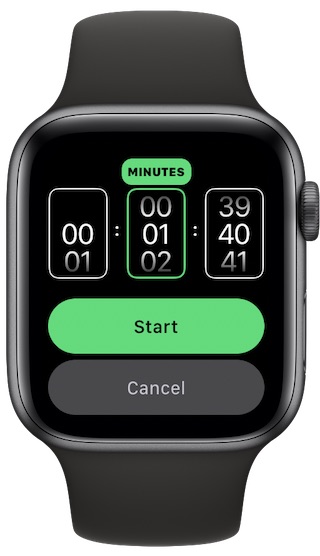I’ve previously talked about flow hacks for the Emergency Physician – with emphasis on:
- Avoiding reassessment land
- Grabbing multiple ‘charts’
- Increasing actions per minute
- An emphasis on ‘shift rhythm’ rather than number of patients seen when evaluating learners
In this next post on flow hacks for the Emergency Physician, I want to dive into some less frequently considered efficiency tips to enhance your clinical and teaching productivity on shift.
An important aspect of Emergency Medicine wellness is leaving your shift on time, utilizing these flow hacks will help you maintain a high level of efficiency AND can help you to ensure that you are leaving your shift on time.
Use your technology
Many of us nowadays have a smart watch or phone on us during our shift. It is to our benefit to use the technology these devices have to our advantage to make us more organized on shift.
There are often multiple tasks we need to complete in a short amount of time as emergency physicians – and this requires triaging some of these things to do now, vs doing later. For example – orthopaedics has requested assistance for a sedation, you need to reassess a patient after performing an epley maneuver etc. It is important to schedule these things into your shift to optimize your time and efficiency – so set an alarm, timer or reminder.
‘Hey Siri – set a timer for 20 minutes’. This serves as my reminder that in 20 minutes, I will go help orthopaedics with that reduction, or reassess a patient. This makes it easier for me to stay on track, and enhances my situational awareness by maintaining a ‘schedule’ while on shift.

Situational Awareness
When you are the only doctor working in a particular section (or the entire emergency department), you know that seeing these patients is ultimately a YOU responsibility (i.e.: there is no one else there to see them for you). Given this, you should have a sense of who is in your department and why, and what you can do to optimize the flow of ALL patients through that department.
For example, if you have a patient that is very clearly there with complaints of a UTI, you are going to want a urine sample. Go ahead and order that before seeing your next patient, because you know in 20-30 minutes when you do finally see them, you’ll wish you had already ordered it.
Your learner has 2 patients that they are prepared to disposition, and you hear of a trauma patch, ETA: 20 minutes? Use that 20 minutes wisely to disposition those 2 patients because it will help flow through your department, and minimize your cognitive burden for when you exit that trauma case. Just as you anticipate the future needs of a critically ill patient, anticipate the future needs of your department.
As Emergency Physicians, we have a lot of situational awareness, but taking it to the next level to be aware on a micro, as well as a macro level, can ensure that you operating at peak efficiency, while making your own life/job easier.
Use your nurses
Especially when it is busy, trust your nurses as your eyes/ears. 5 new patients have just arrived? As the bedside nurse for help triaging who needs to be seen next, and where test ordering priorities are. Obviously, do not anchor or carry forth diagnostic momentum, but utilize them as an excellent clinical resource. In doing this, I find nurses are absolutely critical to help push and optimize flow, especially in a busy department.
To this extent – empower your nurses to help you when volumes are high to help optimize flow and patient care by using protocols, triaging and using their strong clinical experience to your advantage.
Break the shift into quarters
I’ve previously discussed the hazards of getting stuck in ‘reassessment land‘. We will often start a shift strong, and see a bolus of patients, but then spend 2-3 hours stuck reassessing those patients without moving flow. One of the most important flow tools is to ensure that while you are reassessing new patients, you are still picking up new charts (i.e.: I will see 1-2 new patients for every reassessment I do). One way that I accomplish this, cognitively, is by breaking a shift up into quarters.
At roughly the halfway mark of a shift is when I anticipate taking a break, so by this time I try to have a ‘clean slate’, i.e.: have most my dispositions done, and few active patients – so that when I return from my break, I can hit the ground running as if it is a ‘fresh half’. This helps me to ensure that I am being just as productive in the later half of my shift as in the beginning.
In order to accomplish this, I spend roughly the first quarter of my shift seeing new patients, with 1-2 reassessments. In the second quarter, I do the bulk of my reassessments while continuing to see a few new patients, and as we hit the ‘2 minute warning’ (i.e.: when my hypoglycemia is kicking in), I try to wrap up most my reassessments so that when I come back for the third quarter, I can hit the ground running with a new bolus of patients.

Deferred charting
Deferred charting is nothing new, and a technique that a lot of providers already utilize. It is a mixed bag, however, because it can help your flow – but also hinder it, and cause you to be late leaving work. I find that there is a fine art to it. Sitting down to chart on one patient at at time is inefficient, regardless of if you are on paper charts or an electronic health record. Ideally, I like to chart on somewhere between 2-5 patients at once.This ensures that when I am in a ‘cognitive space’ of charting, that I am not interrupting this, and I am optimizing my efficiency by completing one task at at time.
I build deferred charting into my shift quarters, trying to bolus my charting at the end of the 1st, 2nd and 3rd quarters. In the final quarter, I tend to leave the last 30-45 minutes of my shift for charting. This facilitates me leaving my shift on time, but because of the previous techniques my flow has been strong enough that I can justify not seeing patients in this time frame.
A key point to consider is that leaving ALL your charting for the end of shift can be too cumbersome, lead to errors, and result in you being delayed at the end of your shift. So while deferred charting is a useful tool, don’t let it get out of control.
Triage
Triaging when you will see particular patients is a useful tool if you’ve maintained your situational awareness as discussed above. This also applies to when you may see your learners patients. With some learners (i.e.: a junior medical student), you need to see that patient after they have. But with more senior learners, you can often triage when you will see their patients to a time that is convenient for you (i.e.: I build it into my shift rhythm as I would time my clinical reassessments) in order to be the least disruptive to my flow. Clear caveats exist; i.e.: when there is concern over a patient or there is a critical decision point.
Triaging seeing your own patients is also an excellent way of optimizing your own flow. I will often grab multiple charts at once when there are many patients to see, and arrange them in a way that makes cognitive sense. For example:
- First patient needs a chest x-ray, see them – send them for their imaging
- Second patient needs a history and physical exam – see them, send them home
- Third patient is more complex and needs bloodwork and imaging – see them, return to your work station – order the imaging and bloodwork
- At this point, the chest x-ray is likely returned on your first patient, and you can disposition them
Anticipating your flow needs in advance can help you flow more seamlessly though a shift. Now of course, in a chaotic Emergency Department, even the best laid plans can be derailed – but for the most part, these guiding principles hold fast.
Take a break
We make a lot of high-stakes decisions on shift, and this maintenance of a high cognitive load is nothing unusual for us. However, this can be incredibly cognitively fatiguing and can lead to poor performance.
“People make errors for a variety of reasons that have little to do with lack of good intention or knowledge. Humans have many intellectual strengths (e.g.: large memory capacity and an ability to react creatively and effectively to the unexpected) and limitations (e.g.: difficulty attending carefully to several things at once and generally poor computational ability, especially when tired)” – (Donaldson, 2008)
Taking a break on shift is important, especially to eat something. I don’t mean scarfing down a sandwich while you’re charting on patients – a legitimate 5-10 minute break, where you DON’T think about medicine. This cognitive break and oral intake is like a nap for your brain in the midst of a cognitive battle on shift. All shift, your brain is using high levels of glucose, and that needs to be replenished. Emergency Physicians love to be martyrs when it comes to taking breaks – but it isn’t good for you, nor is it good for your patients. You can usually squeeze a moment in for that cognitive and dietary break.

Spend MORE time in the room
I recognize that this one seems counter intuitive – but hear me out. The more time you spend in the patient’s room, the more data you can adequately collect. We often default to testing to help us adequately determine what is going on with a patient, but this over-reliance on testing can often result in worse patient care, and worse flow.
When we spend more time with a patient we collect more data through our history and physical exam, providing a more accurate pre-test probability. As a result, we can often do LESS testing, and this can lead to drastic improvements in our flow.
Do you find any of these tips helpful? What do you do to optimize your flow and efficiency – we want to hear what you think, comment below to reach out on twitter.
References
Donaldson, M. S. (2008). An Overview of To Err is Human: Re-emphasizing the Message of Patient Safety. Patient Safety and Quality: An Evidence-Based Handbook for Nurses, 37–46.


Thanks Shahbaz. Good tips! Another helpful practice I’ve found increased my efficiency is the one-step discharge instruction. I.e. Someone with ILI waiting on a chest x-ray – I tell them if negative I will get the nurse to send them home. Give ILI instructions. (If pos, I will see them and give rx). Ditto with anyone awaiting RN-initiated labs, like a PV bleed waiting on a HgB and HCG. I do my bedside assessment, determine they are not sick, and tell them if labs look reassuring, nurse will send home. Give d/c instructions then and there. Finally, with anyone you determine to be not sick but needing symptom management (migraine, cyclic vomiting, renal colic, etc). Do all the teaching at first contact, initiate treatment orders, and put in a conditional d/c order once patient feeling better / tolerating fluids etc. Saves the walking around for reassessments. Of course many patients do need clinical reassessments, so these strategies are to be employed in selected cases only.
Excellent points made here!
To add to the benefits of these hacks to help you manage flow, there’s the benefit to customer satisfaction: moving patients more quickly through the process and spending a bit more time actively listening to them improves their perception of care which, in turn, improves your job satisfaction.